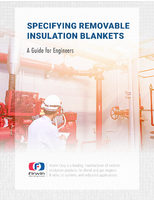Portable IR Analyzers Provide Petroleum & Wastewater Industries with Accurate Oil Content Measurements
Fixed filter infrared (IR) analyzers have been used to test oil levels in produced water on off-shore and on-shore drilling platforms for well over 45 years. U.S. EPA methods 418.1 and 413.2 were used extensively on a worldwide basis until the Montreal Protocol called for Freon (the solvent used in the analysis) to be phased out. Infrared analysis using tetrachloroethylene (perchloroethylene) is still a regulatory method in the North Sea.Â
As IR analysis is typically used as a quick verification that oil and grease levels are below the regulated level, other solvents such as tetrachloroethylene, hexane or S-316 are now widely used on oil drilling platforms even though there is not an associated EPA method for these solvents. There is an ASTM method (D-7066) for infrared oil in water analysis using S-316 as the extracting solvent.
For industrial wastewater, there is a general feeling that it is necessary to use an EPA method. However, there are situations where a rapid on-site test can be invaluable and even save money and time.
On the industrial side, operators of a pretreatment system can test how their oil separators work under different loading conditions. A portable infrared analyzer (such as the InfraCal TOG/TPH Analyzer) gives a result in less than 15 minutes. This real time result gives the operator the necessary information to make adjustments to avoid sending wastewater to the sewer that is over the regulatory limit.
For the treatment facility that is imposing the limits, an on-site test allows them to catch offenders. While they ultimately require a testing lab to verify the offense, only the samples that are over the limit need further testing. Hopefully, most of the samples will be within the limit saving a significant amount on laboratory testing. If not, a more costly sanitary sewer overflow (SSO) could be avoided by diverting the effluent loaded with oil and grease that causes the blockages.
The individuals involved in the wastewater industry who need to test oil and grease levels in their effluent would benefit by using the same time-test, field-proven infrared analyzers as the highly regulated petroleum industry to verify their oil in water levels.
For further information on the InfraCal Portable IR Analyzers for measuring oil content levels in water, contact: Wilks Enterprise, Inc., 25 Van Zant Street, Ste. 8F, E. Norwalk, CTÂ 06855; TEL; 203-855-9136; FAX: 203-838-9868; Email: info@WilksIR.com; Website: www.WilksIR.com; or download information directly at http://www.wilksir.com/oilgrease-analyzers.




